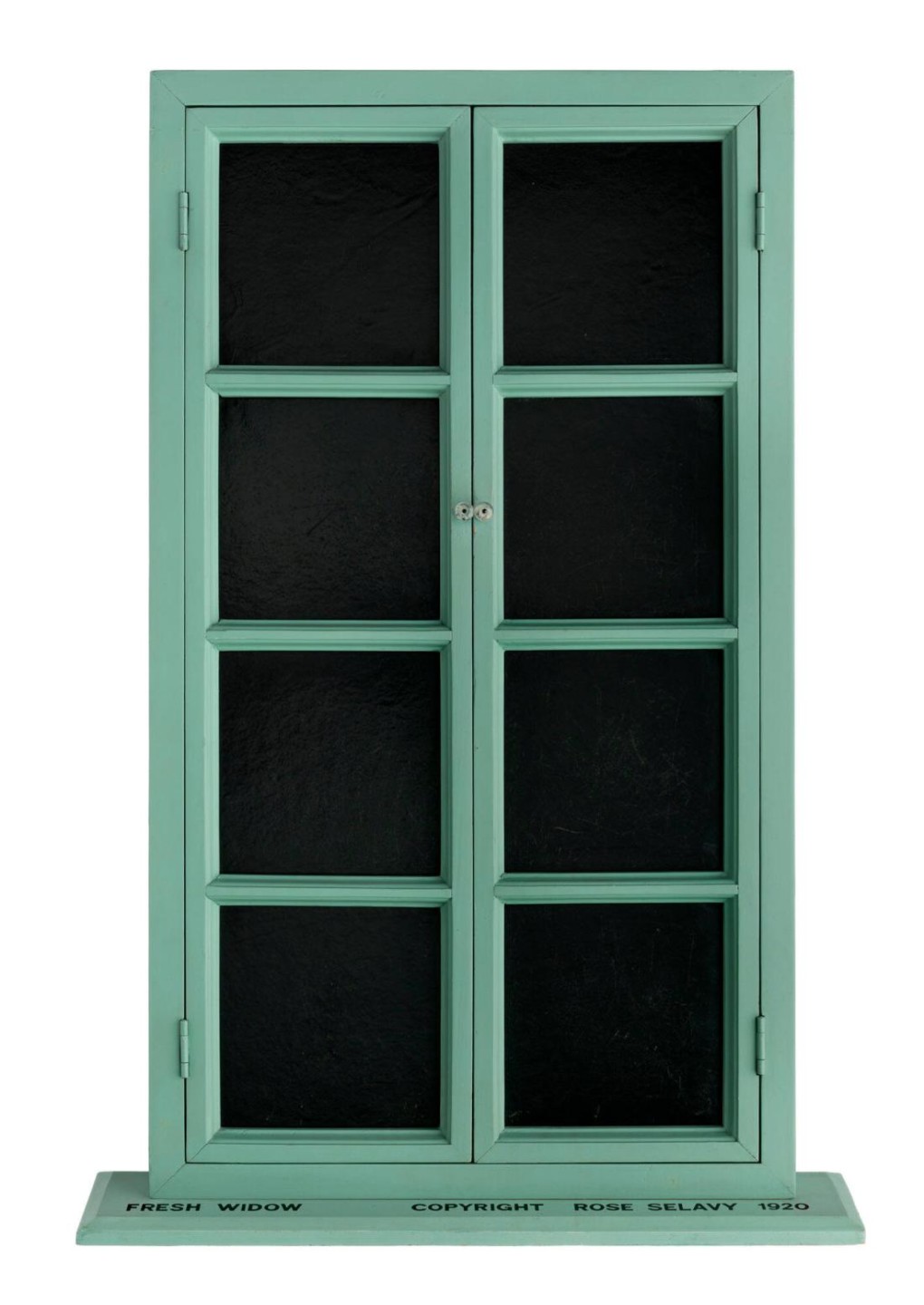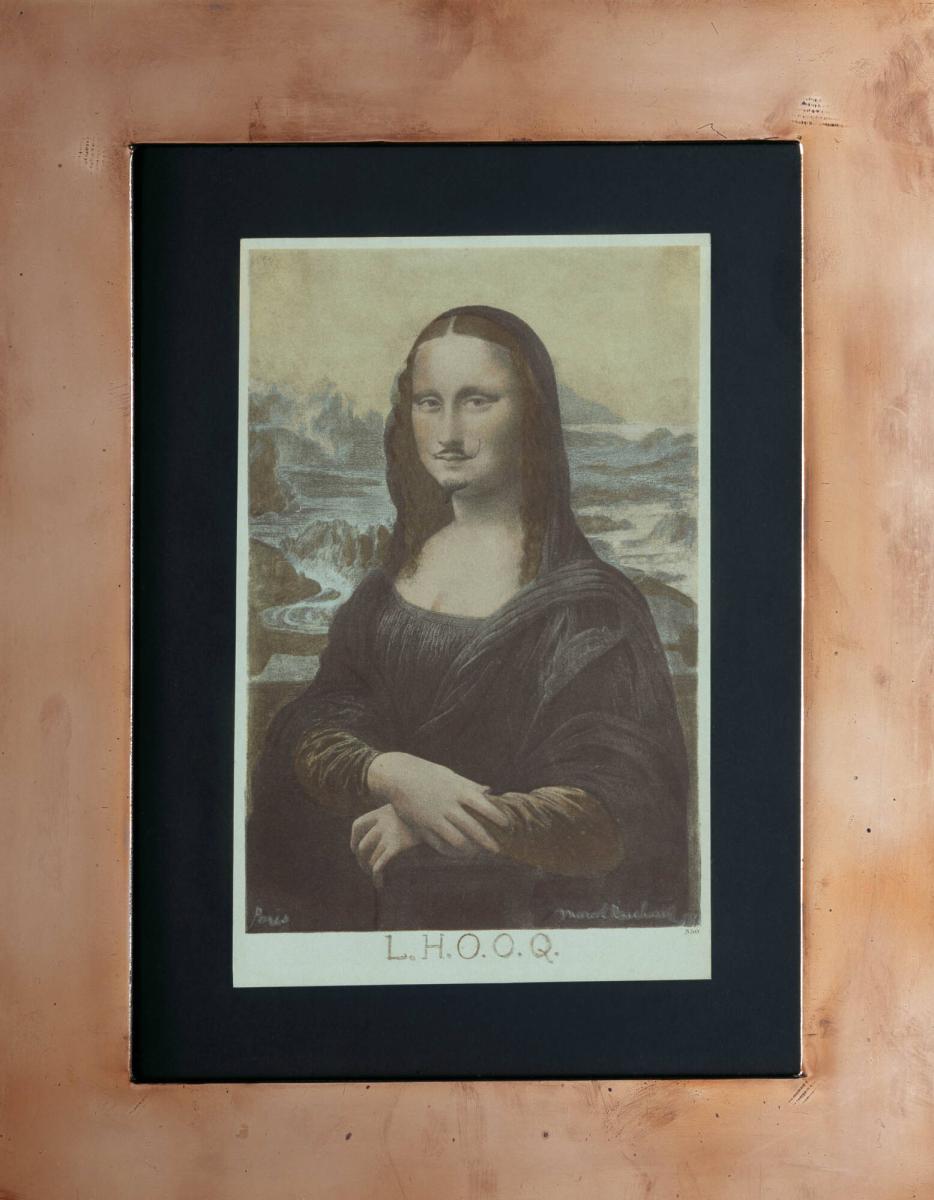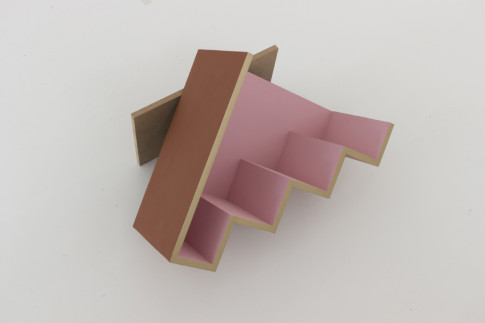
Jimmy Robert, Descendances Du Nu, 2016 Photo: O.H. Dancy. Courtesy of the artist, Stigter Van Doesburg, Amsterdam and Tanya Leighton, Berlin and Los Angeles.
Works from the Collection in dialogue
Robert’s installation includes objects, photographs, performances, sounds, and writing and is based on Marcel Duchamp’s painting “Nude Descending a Staircase” (1912). Robert’s work also ties in with artist colleagues such as Sturtevant and Sherrie Levine, who both have referred to Duchamp in their work. Further, the installation serves as a set for the performance that is part of the work.
Marcel Duchamp (1887-1968)
Marcel Duchamp is today considered one of the 20th century’s most influential innovators of art. He thought that the most important was the idea behind the artwork. Duchamp was one of the earliest advocates of the open art, where the viewer’s interpretations contribute to the creative process and thus to the meaning and interpretation of the artwork.
Marcel Duchamp is best known for his readymades. He challenged the art world by selecting everyday objects that he signed and then placed in an art context. One of the most famous examples is “Fountain”, an upside-down urinal, signed R Mutt.
“Fresh Widow”

Marcel Duchamp’s “Fresh Widow” was made in 1920, its title a play on “French Window,” door-height double windows with no middle post. But in its new form, the title refers to the recent widows from the First World War. The black leather on the window panes alludes to the dark veils worn by grieving women.
In true Duchamp spirit, the artist did not make the window himself, instead having it done by an American carpenter; but he hand-painted a copyright notice on the work and signed it. The work is the first he signed with the name Rose Sélavy, a fictional alter-ego that Duchamp began working under in the 1920s.
The work in Moderna Museet’s collection is a replica created by Ulf Linde in 1960 that was signed by Duchamp when he visited Moderna Museet in 1961. Donated in 1961 by Ulf Linde.
“L.H.O.O.Q.”
L.H.O.O.Q. is one of Marcel Duchamp’s most iconic readymades. Duchamp used a postcard depicting Leonardo da Vinci’s Mona Lisa, drawing a mustache and a beard with pencil on her face, and signing it with the work’s title.
Like several of Duchamp’s works, the title is a play on words. The letters, when spoken in French, sound like “Elle a chaud au cul” (in English, approximately “she’s got a fire burning down below”), which many found offensive when the work was created. During his career, Duchamp created several versions in various sizes and of different materials.
The work has inspired artists such as Salvador Dalí, Fernand Leger, and René Magritte, all of whom have created their own interpretations. Sherri Legine used L.H.O.O.Q. as a starting point for her work “Meltdown (After Duchamp)” which, in turn, inspired Jimmy Robert. Donated in 1975 by Ulf Linde.

Sturtevant (1924–2014)
Sturtevant is perhaps best known for her repetitions of other artists’ works, like this one: Marcel Duchamp’s famous “Fresh Widow”. By meticulously recreating selected pieces by male artists in the 1960s and 1970s, Sturtevant challenged not only copyright laws and demands on artistic originality, but also the authenticity of the concept of art as such. How should the idea of “genuine” art and culture be understood, and how can it be produced and conveyed? In our contemporary digital society, overflowing with clones and copies, these questions seem more relevant than ever. Elaine Sturtevant asked them more than 50 years ago.
“Duchamp Fresh Widow”

Elaine Sturtevant was a groundbreaking artist who challenged our understanding of what art is and what it means to be an artist. In 1965, she began reproducing paintings and objects by contemporary artist colleagues with small, intentional deviations, here “Duchamp Fresh Widow” (donated in 2012 by Thaddaeus Ropac). She continued throughout her artistic career to repeat the work of famous male artists such as Andy Warhol, Joseph Beuys, and here, Marcel Duchamp’s “Fresh Widow” (1920/1960).
Just like Duchamp, Sturtevant’s working method, which expanded the field of art, was met by a lack of appreciation from her contemporaries. Not until the late 1980s did the art world begin to accept her perspective. In our digital time, with all its discussions of original vs. copies and copyrights, her art is very timely.
Sturtevant’s photograph “Duchamp Nu descendent un escalier” (1968/1996), is embedded in the large photograph that forms part of Jimmy Roberts “Descendances du nu” (2016).
Jimmy Robert
Jimmy Robert arbetar med iscensättning av konsthistoriska diskussioner och samtida frågeställningar. Hans verk, som ofta lyfter en poetisk …
Asymmetrisk grammatik

Jimmy Robert – Descendances du nu
Performancen är en del av installationen “Descendances du nu” (2016), det centrala verket i Jimmy Roberts utställning. Installationen …
Performance





